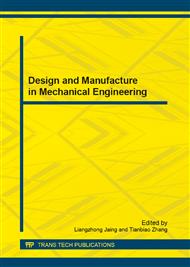p.11
p.16
p.20
p.25
p.32
p.39
p.47
p.51
p.56
A DSC Investigation of the Effects of Cold Deformation and Low Temperatures Aging on the Microstructural Stability of a Peak Aged (PA) Al 6061 Alloy
Abstract:
The effects of cold deformation and low temperature aging on the microstructural stability of a peak aged (PA) Al 6061 alloy were investigated by means of DSC and microhardness measurements. During aging at a relatively low temperature (100 °C) of the PA material, a small increasing of the mechanical properties was detected, which was explained by the formation of atomic clusters, GP zones and β phase. The response to the aging treatment of the cold deformed materials depends on both the level of the cold deformation and the aging temperature. During aging at relatively low temperature (100 °C), in contrast to the 75 % deformed material that shows a small variation in their mechanical properties, the mechanical properties, of the 30 % deformed material, are almost constant. This was attributed to the higher driving force of the recovery reaction in the heavily deformed material. In the other hand, aging at relatively higher temperature (140 °C) of the heavily deformed material, leads to a fast softening due to an increasing of the recovery kinetics.
Info:
Periodical:
Pages:
32-38
Citation:
Online since:
September 2013
Authors:
Price:
Сopyright:
© 2013 Trans Tech Publications Ltd. All Rights Reserved
Share:
Citation:


